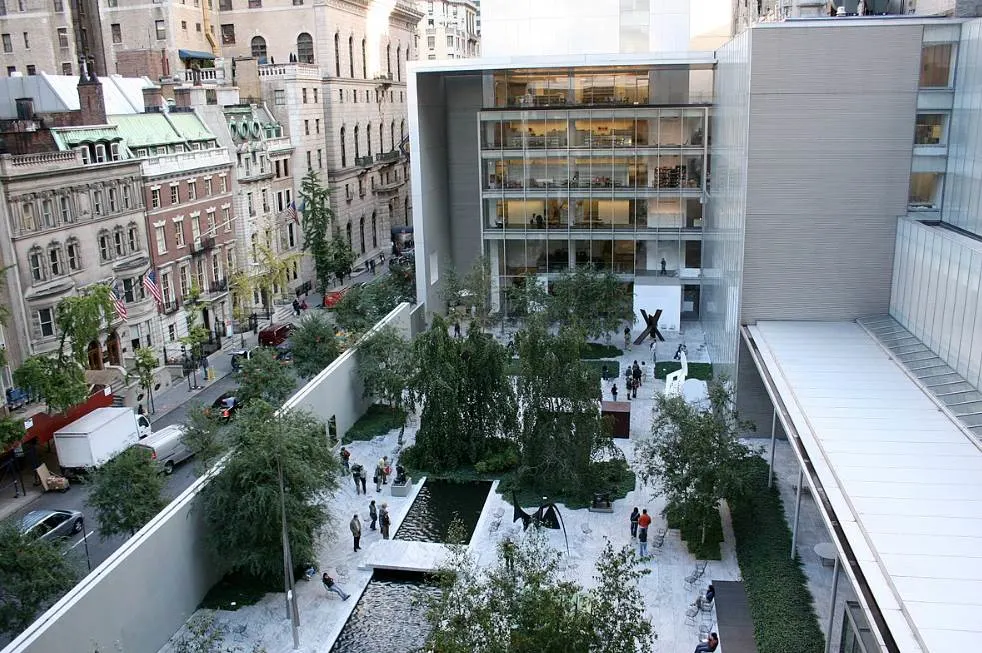There’s something special about a particular Matisse painting, and it’s not just the fact that it overflows with bright red colors.
What initially started as a simple depiction of the studio of Henri Matisse (1869-1954), one of the most influential artists of the early 20th century, transformed into one of the most important paintings of modern art.
Let’s take a closer look at some of the most interesting facts about The Red Studio or “L’Atelier Rouge,” fascinating work of art for many reasons.
1. It was painted shortly after the artist’s Fauvism period
Henri Matisse was a French artist who received a formal art education in Paris in the late 19th century. His first paintings were inspired by works of Old Masters such as Nicolas Poussin and Jean-Antoine Watteau.
His mentor during this period was academic painter William-Adolphe Bouguereau, a man who incorporated a tremendous sense of Realism into his works.
Matisse’s view on art changed dramatically when he was introduced to paintings by Vincent van Gogh while visiting Australian artist John Russell.
He started experimenting with color techniques and became one of the leading figures of the Fauvism art movement.
As a Fauvism artist, he developed a technique that focused on strong colors that weren’t realistic representations of the subject.
The movement only lasted between 1904 and 1908 but had a profound effect on the course of art history. He completed The Red Studio shortly after in 1911.
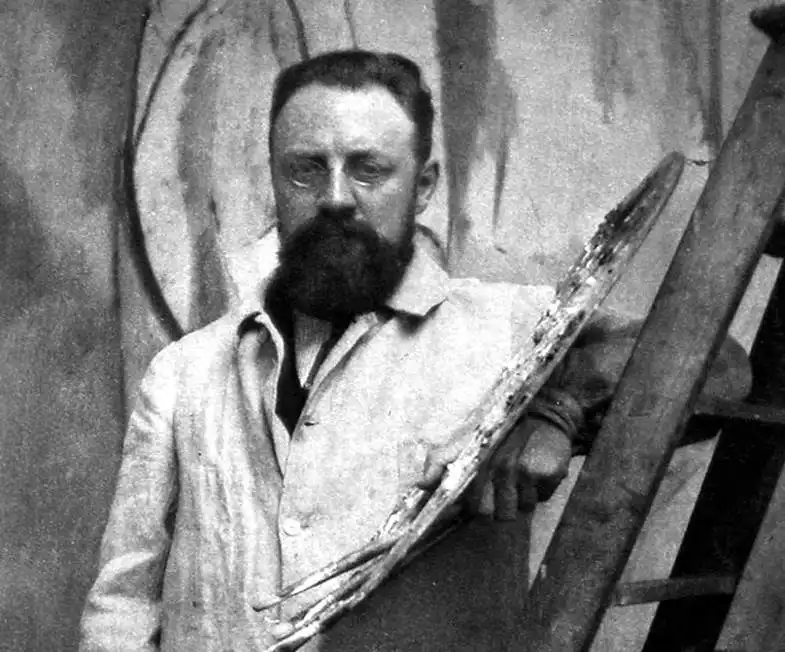
2. It provides a peculiar peek inside the artist’s newly established studio

As the name of the painting suggests, the painting depicts the artist’s studio in a bright red shade. Only the outlines of the furniture can be distinguished by the yellow outlines.
The lines also provide a sense of balance and depth to the entire composition which transforms the flat surface into a multi-dimensional space.
The painting depicts the artist’s studio which he had built just a couple of years earlier in 1909. This was shortly after the conclusion of the Fauvism art movement.
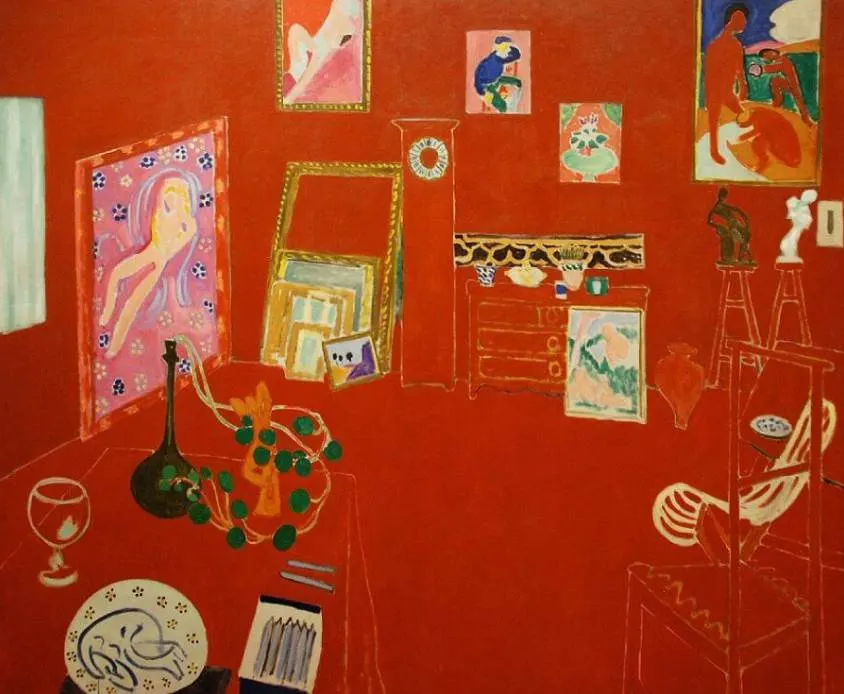
3. It resembles another painting that Matisse produced in his studio
The Red Studio is the most famous painting of his studio. He also produced another work on the same subject that provides better insight.
The Pink Studio looks very similar to the one dominated by red, although a lot of the furniture is arranged in a different order.
This work provides a more accurate representation of his studio, regardless of the fact that it’s also overflowing with strong colors just like his most famous Fauvism paintings.
Just like in the red version, he included paintings, sculptures, and ceramics that he already completed earlier.
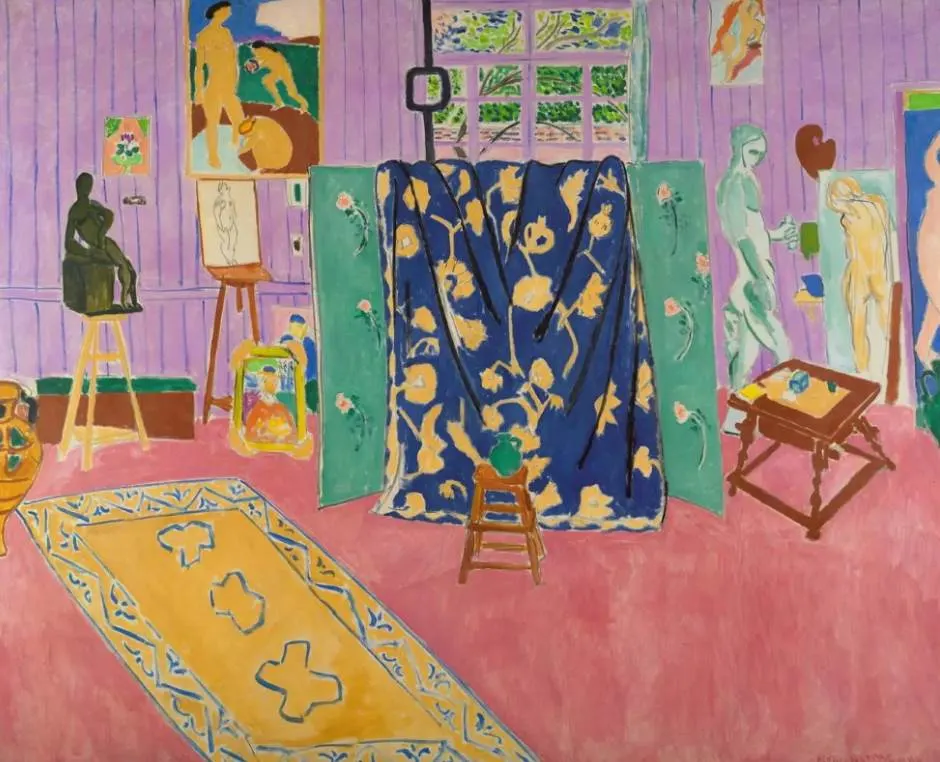
4. The painting embodies his artistic style in this period of his career
Henri Matisse traveled frequently during this period of his life and he absorbed all the different forms of art that he encountered during these trips.
He studied African art during a visit to Algeria in 1906 and incorporated Primitivism into his works. He admired Islamic art in Munich in 1910 and he subsequently traveled to southern Spain to study Moorish art.
The Post-Impressionist artists continued to influence his art. His Fauvism experiment and adventures abroad resulted in a newly invented sense of boldness in his use of color.
The Red Studio is a culmination of all these influences and one of the reasons why it holds such an important spot in the artist’s oeuvre.

5. The color scheme of the studio was originally completely different
One of the most fascinating facts about The Red Studio is that the painting initially looked very similar to The Pink Studio.
After completing the first version of the painting, he left it alone for an extended period of time, probably weeks or even months.
During this time, he changed his mind and overpainted several fields with the Venetian red that dominates the painting today.
Research has shown that the original version featured a blue wall, a pink floor, green outlines, and ochre furniture.
This means that the yellow (ochre) outlines of the furniture aren’t outlines but remnants of their original color that was overpainted.
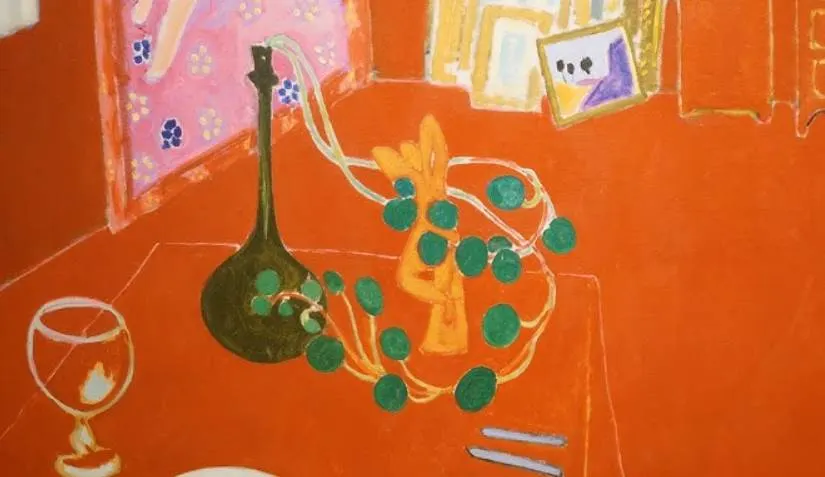
6. It was voted among the most influential paintings of the 20th century
The Fauvism art movement has a profound effect on Modern Art. it made artists rethink their use of color, including Henri Matisse himself.
Overprinting the original colors of a relatively simple depiction of the artist’s studio was a radical move. It turned it into a sort of abstract painting.
This influenced color field painters, a style that only emerged in the 1940s and 1950s and which in turn inspired Abstract Expressionist artists.
Because of this, The Red Studio was ranked number 5 in a list of the most influential artworks of Modern Art. Because of this, it also ranks in our top 20 list of most valuable paintings in museums.
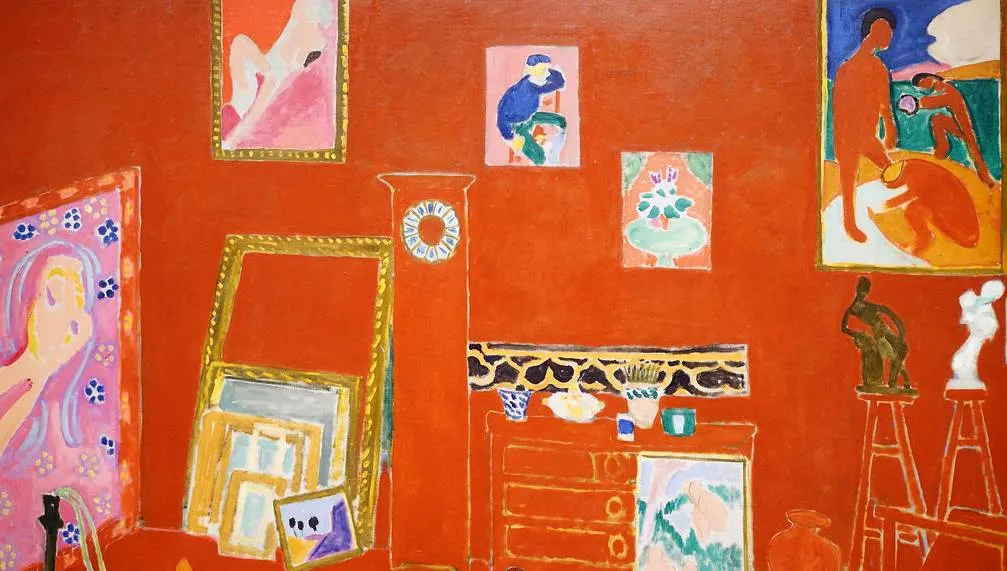
7. How big is The Red Studio by Henri Matisse?
It took a couple of days before Matisse managed to completely overpaint the original colors with a thin layer of red paint.
That’s because this oil on canvas painting is relatively big with dimensions of 181 x 219.1 centimeters (71.25 x 86.25 inches).
8. Where is the painting located today?
The painting remained in the artist’s studio and traveled along with him when he moved to a suburb of Nice on the French Riviera in 1917.
It remains in his collection until 1926, the year it was purchased by David Tennant, an aristocrat who hung it in his exclusive Gargoyle Club in Soho, London.
It was purchased by Georges Keller of the Bignou Gallery in New York City in 1942 and subsequently acquired by the Museum of Modern Art in NYC in 1949.
Today, the painting is still part of the collection of the MoMA. It’s on display in the Robert B. Menschel Galleries on Floor 3, 3 East of the museum!
